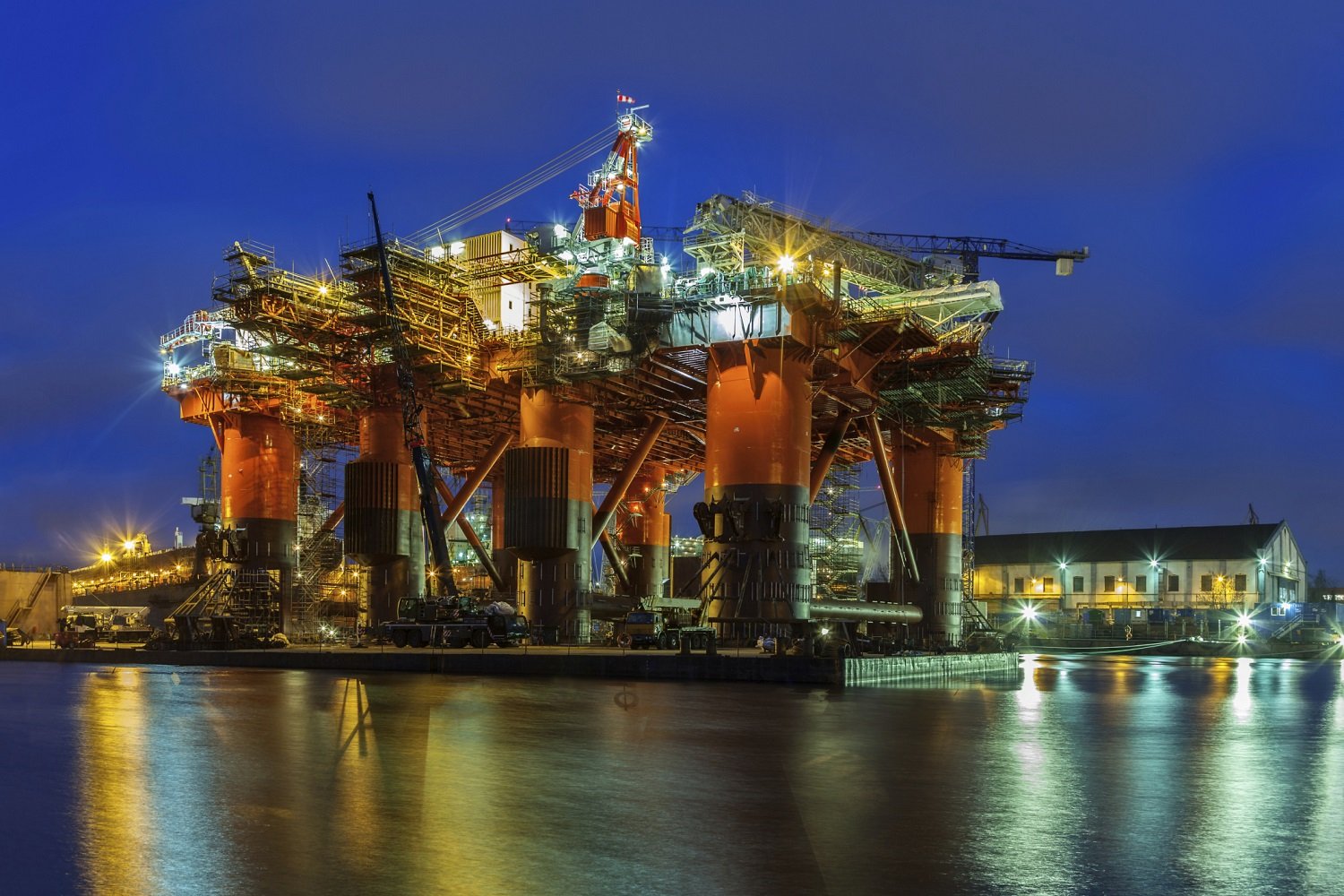
Another harsh environment rig is out of work for Seadrill. It could get worse before it gets better.
On May 23, offshore drilling specialist Seadrill Ltd. (SDRL +0.00%) announced that it had been notified that the contract for its semi-submersible drilling vessel West Hercules was being canceled. The contract wasn't scheduled to expire until January 2017. This adds another to the list of Seadrill's idle vessels, and is a further indicator that the offshore drilling environment remains on a downward trajectory. But what's the real impact, both in the short- and longer-term for the company?
Here's a clue: It's getting paid $61 million to stop drilling. That's not a good sign for the drilling industry in the short term, and weakens investors hopes for Seadrill to have a quick recovery.
What just happened
The West Hercules had been under contract with Norway-based Statoil ASA (ADR) (STO 0.47%), at a day rate of $445,000; Statoil had planned to utilize the vessel in the Aasta Hansteen gas field off the Canadian coast starting this summer. If the vessel had worked for the entire remaining period of time on the contract -- assuming it ended on Jan. 1, 2017 -- that's roughly 220 days of income lost. Based on the $445,000 day rate listed in the company's fleet status report for this vessel, that's $94.8 million in missed revenue.
However, the terms of the contract apparently allow for an early cancellation, with Statoil set to pay Seadrill $61 million, plus additional reimbursements for costs to demobilize the vessel. In other words, this pulls a total of $34 million out of Seadrill's potential operating revenues for the remainder of this year. It also says a lot about the state of offshore when an oil producer is more willing to give a company $61 million to stop drilling than it is to pay $95 million to drill for oil.
Where does this leave Seadrill?
This potentially leaves Seadrill with as many as 16 vessels in its active fleet (i.e. not including newbuilds) owned either directly or through subsidiaries, no longer working at the end of May. This includes several vessels with options that could extend contracts expiring in May, so it's not 100% clear that the company will have that many vessels out of work just yet. However, the lack of press releases indicating that the options have been picked up any on those vessels is a strong indication that the company hasn't been able to reach agreements to keep them working.

It will be at least two more years before Statoil starts development on the Aasta Hansteen field. Image Source: Statoil.
This cancellation also indicates Seadrill's $10.7 billion backlog may generate significantly less than $10.7 billion in revenue. After all, the West Hercules looks like it will generate one-third less revenue than it would have if Statoil had kept the vessel drilling until January. To put it bluntly, it's possible we will see more of these cancellations in coming months, significantly reducing Seadrill's cash inflows. This is especially concerning, considering that Seadrill and its subsidiaries have more than a dozen vessels with contracts expiring in the next year.
But at the same time, it must be acknowledged that the operating costs for ships like the West Hercules will fall substantially once they are taken out of operation, whether they are warm- or cold-stacked. And, in this case, the $61 million-plus cancelling fee could potentially generate just as much EBITDA as the $94.8 million in revenue this ship would produce while drilling would produce.
Here's why Seadrill isn't a stock I'd buy now
The bottom line is this: Statoil would rather pay Seadrill $61 million to not drill, than pay it $95 million to drill. That says a tremendous amount about the state of the offshore oil industry today, and how potentially far off a recovery is.
Statoil said in a release that it was cancelling the contract because it's delaying its plans to drill in the Aasta Hansteen field -- where the West Hercules would have been operating -- until the second half of 2018. That's another two years before the company will begin operations there.
Bottom line: Offshore oil and gas producers have very little appetite right now for developing new resources, and it doesn't look like that's going to change anytime soon. Factor in how much this contract cancellation reduced Seadrill's 2016 revenue, and one shouldn't take the company's $10.7 billion backlog at face value.
Factor in a host of vessels with either already-expired or soon-to-be expiring contracts, and it becomes clear that now's probably not the time to buy shares of any offshore producer. This is particularly true of one with as high a debt burden as Seadrill has. Eventually offshore drilling will recover, but until there are some signs that's happening, better to stay on the sidelines.





